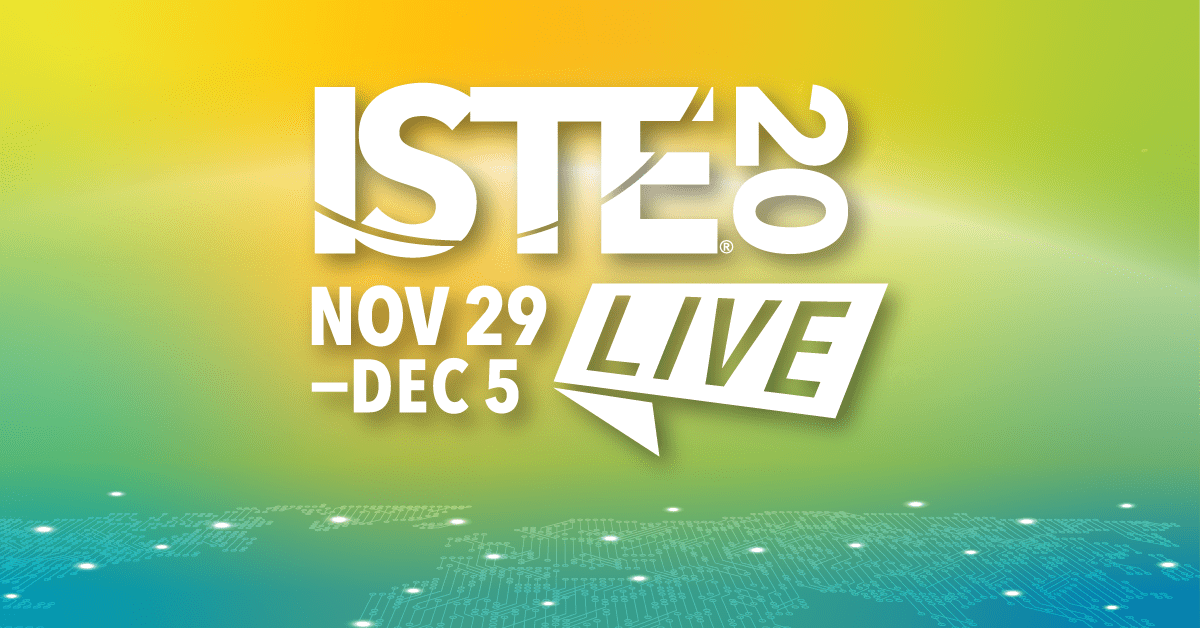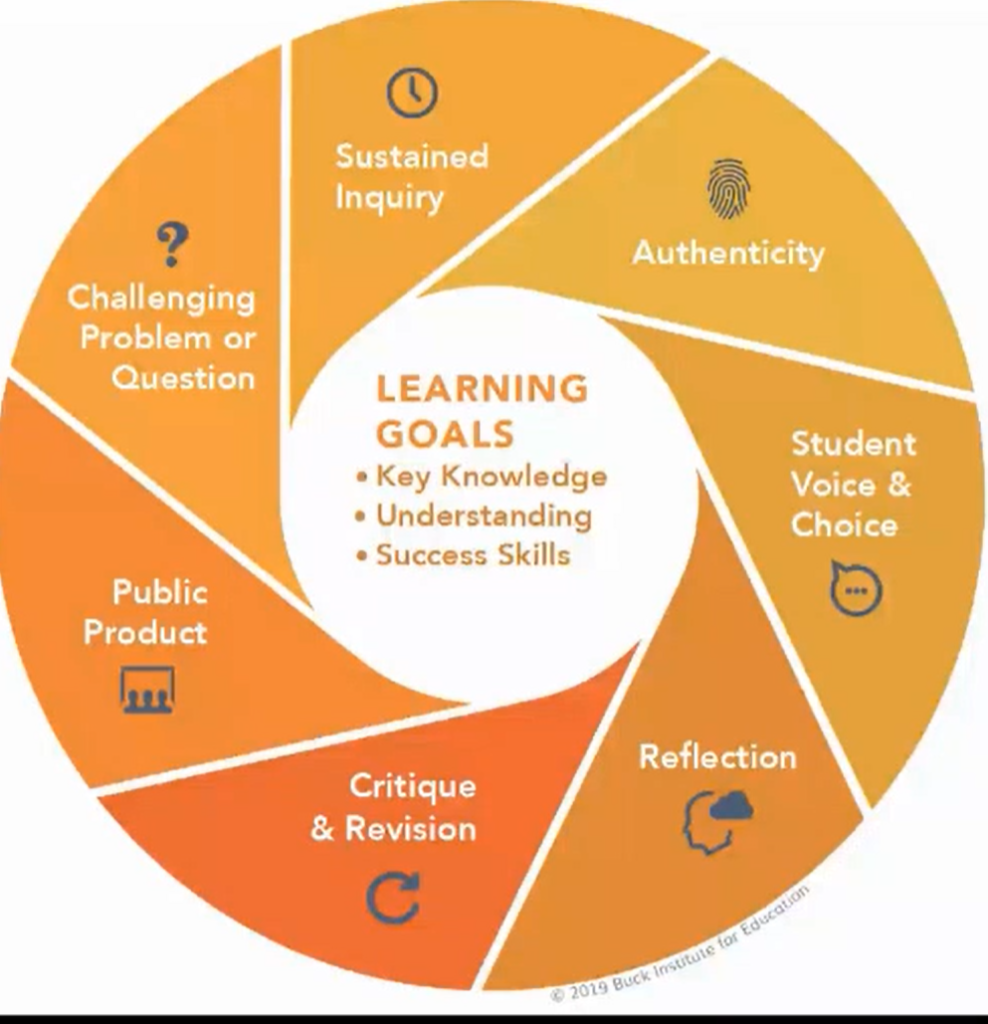Project-, Problem- & Challenge-based Learning

*This post has been written as part of my professional growth plan through my #ISTE20 scholarship.
Anatomy of Effective Digital-Age Projects: Designing for Equity, Inquiry, Literacy
Presenters: Suzie Boss, Myla Lee
Overview: “From project launch until final showcase, decisions about project design, technology integration, and student choice shape the quality of the learning experience–both in person and via remote learning. We will analyze the anatomy of effective projects, emphasizing opportunities to amplify inquiry, equity and digital-age literacies in PBL.”
Main Takeaways:
- PBL allows for collaboration, creativity, curiousity, connection, critical thinking, etc
- How can we amplify inquiry, equity, and digital-age literacies in PBL?
- Project launch: spark curiosity, create a need to know, connect to prior knowledge
- Build understanding: acquire new knowledge and skills, investigate questions
- Develop & critique: apply learning to create a product or solution, improving with feedback
- Public product: share results with authentic audience, reflect on growth

- How can you connect the project to students’ culture and family traditions?
- Ex: student-run garden where students could bring their own seeds to plant from plants they use at home and they can use grown plants to make traditional recipes
- PBL & Digital Tools allows for:
- increased collaborative options
- real-world connections
- high-quality experiences
- How to develop good project ideas?
- Begin with your curriculum
- Pay attention to current events/issues/culture/community
- Factor in student questions/concerns/interests
Further Resources:
- #PBLNow hashtag on Twitter
- Presentation website (notes, resources, etc)
- Myla’s website
- PBL ISTE Course Overview
Using Digital Storytelling as PBL to Transform Student Learning

Presenter: Michael Hernandez
Overview: “After scrapping his 20-year-old curriculum in the face of changing demographics and rapid tech evolution, the presenter developed new ways to foster passionate learning in his classroom. In this workshop, participants develop their own project-based learning framework based on digital storytelling within a collaborative, student-centered classroom.”
Main Takeaways:
- What’s the point?
- Traditional classrooms are often disconnected from student realities
- Focus on purpose, relevance, authenticity, agency, and passion
- PBL & CBL


- Examples
- Before: teacher-centered, lecture, memorization, compliance
- After: student-driven, inquiry, application, practice, independent thinking
- Students are still provided with structure, realistic expectations, scaffolded skills and appropriate modelling
- What is storytelling?
- snapshots of knowledge, glimpses into dreams, making connections, framing information and experiences
- Digital stories are created and shared digitally and uses multimedia
- interactive elements
- accessible
- Tips
- Start small
- Introduce and model tools to start with and then let students explore independently
- Learn, make mistakes, and troubleshoot together
Further Resources:
Can We Talk? Using Personality to Guide Groups, Connection, Feedback & Relationships
Presenter: Stephanie Rothstein
Overview: “People’s Choice winner. Relationships and connection are more important that ever. Learn how to connect virtually and in person. Understand how to apply the True Colors Personality Assessment (digitally) and then use this understanding to guide groups, connection, feedback and relationships.“
Main Takeaways:
- Educators often use personality-style assessments at the start of the year/course as an ice-breaker but don’t often utilize the information purposefully to guide student experiences
- Personality-style assessments can help provide connections for students by performing assessments on:
- characters in books
- people in the news/current events
- elements of nature
- Awareness of self can help students with their growth mindset, personal organization, self-regulation
- Personality-style assessments can help educators provide feedback in a way that can be best utilized by students
- This information can be helpful for both students and educators as they work through the PBL and CBL cycles showed in previous sessions
Further Resources:
- Session website (recording, resources, activities)
- Stephanie’s website
Project-Based Learning & Makerspaces Across the Curriculum
Presenters: Nicholas Provenzano
Overview: “The maker movement has started to spread across the country, but many educators think makerspaces are for STEM only. We’ll share first-hand experience of integrating project-based learning to help all content areas use makerspaces to support student learning.“
Main Takeaways:
- Making: creating something new that was not there before
- Arts are fundamental to making
- Reflect on the type of questions are you asking students
- Are you asking the correct thing?
- What problems do you want to solve?
- How might you approach this situation?
- What can you make to show me?
- Are students empowered to select mediums that meaningful to them?
- Maker “spaces” do not have to be a physical space, it can be a culture within a building; a mentality
- Tool suggestions
- Cardboard, duct tape, loose parts
- Makedo are reusable cardboard screws which provide a more eco-friendly option compared to duct tape
- Robotics: Dash and Dot, Sphero
- Digital: Minecraft Education
- Comes with a chemistry lab
- Glue Guns
- Makey Makey
- Micro:bit
- Arcade.makecode.com
- RaspberryPi
- Yarn
- Sewing Machine
- Dry Erase supplies
- 3D Printing
- Laser cutter
- LEDs
- Copper Tape
- Batteries
- Adobe Spark
- Clay, playdoh
- Allow opportunity for students to explore but to also understand the design process
Further Resources:
How to Connect PBL with your Community: Strategies for Successful Partnerships
Presenter: Suzie Boss
Overview: “Effective projects don’t happen in a vacuum. Real-world PBL connects students with communities, content experts and authentic audiences. We’ll share practical strategies for taking student learning beyond the classroom and suggestions for digital tools that can close the distance between school and the wider world.“
Main Takeaways:
- Why PBL?
- authenticity & relevance
- role models
- expertise
- global competency
- collaboration
- Is there a real client/connection for this project?
- who in the community could be a stakeholder in the student project?
- could be local or, considering all visits need to be virtual, the community could extend provincially or beyond
- Can experts be involved in the critique of student work?
- provide insight into the real-world processes in that field
- When PBL connections?
- depending on the project, students, environment, community connections can happen at different times
- If local connections are not available you can check out:
- Digital Human Library
- Nepris
Further Resources:
The next learning topic on my professional growth plan is “Teacher Education”.